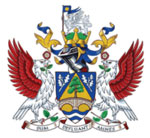The name Elmbridge appears in the Domesday Book of 1086 as Amelebrige, which is derived from the original name of the River Mole (Amele) or (Emley) and the old English word for a bridge (brige).
In the AD 900s Surrey was divided into regional units known as Hundreds, which is the Saxon name for an administrative unit. This referred to an area of land enclosing one hundred households. The conquest of England by the Normans in 1066 brought about many changes in the local administration of the country. William the Conqueror claimed possession of most of the land, and the country was divided into Fiefs.
The previous Shire or Counties system then becoming less important. During the Medieval period, local administration remained in the hands of the feudal aristocracy. It was Henry II who greatly expanded the separation of towns from the countryside, setting up self-governing boroughs. From the 16th century the individual counties were increasingly used as a unit of administration and form a foundation for local government in England today.
By 1888 it was clear that this fragmented system developed over the previous century, was not efficient and an attempt was made to impose a standardised system of local government. In 1894 the creation of a second tier was made, and all administrative counties were divided into either rural or urban districts.
At the beginning of the twentieth century local government in the Elmbridge area was run by several Urban District Councils: Esher and the Dittons, Molesey, Walton and Weybridge. In 1933 Esher was amalgamated with Molesey, and Cobham and Stoke were joined with Walton and Weybridge UDC. These in turn were the main secular successors to the medieval parishes of the same names.
In 1965 a major county local administration reform in London was undertaken. The counties of London and Middlesex were abolished along with parts of Essex, Surrey, and Kent, and formed into a new county of Greater London. An interesting exchange took place in 1970 when the councils administrating two, River Thames islands was changed. Thames Ditton Island was transferred from Greater London Council to Surrey, and Platt’s Eyot Island transferred from Surrey to Greater London.
The local government act of 1972 enforced the union of Esher Urban District Council with Walton and Weybridge UDC. On the 1st April 1974 the borough of Elmbridge was created, with an area of 96.3 km, and a population estimated that year of over 100,000. The council consists of forty-eight elected councillors, representing sixteen wards. The village of Claygate also has its own parish council, while the remainder of the borough has two rather than three tiers of local government. Responsibility for some designated services is with Surrey County Council, such as transport and social services. The new Elmbridge Council headquarters opened in the Civic Centre in 1991.
The council’s arms were created upon the formation of the present district being formed out of symbols taken from the local towns and villages with the Latin motto Dum Defluant Amnes, meaning: ‘until the rivers cease to flow’.

